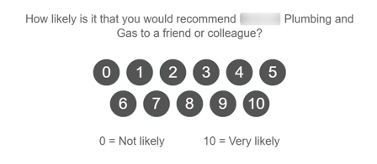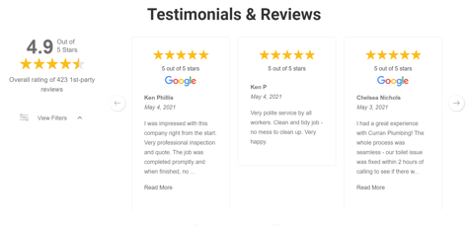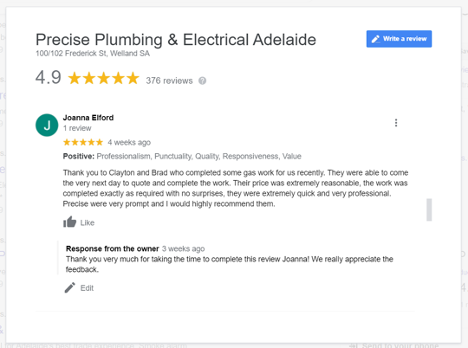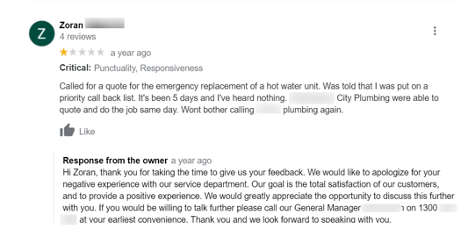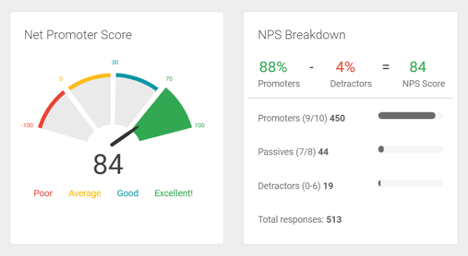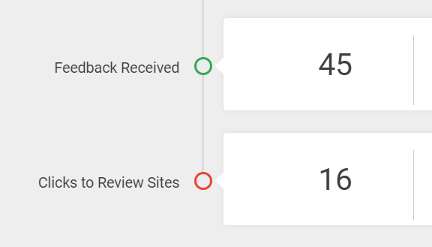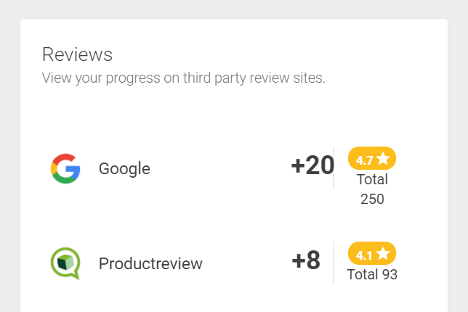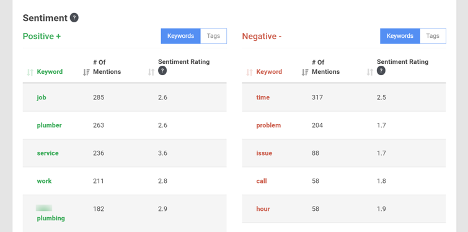Online reviews are crucial to your business success.
But you already know that.
In this article you will learn how to turn customer feedback into a powerful tool for increasing your profitability.
In a service business like yours, the cost of acquiring a new customer can be very high. For this reason repeat customers and referral customers are like gold. The cost of acquiring them is so low – or even zero.
- Highly profitable businesses have many repeat and referral customers
- You win repeat and referral customers by satisfying your current customers
Customer satisfaction is the key. To measure customer satisfaction you need to ask customers for feedback.
The question is:
- Are you asking your customers for feedback?
- Are you using customer feedback to promote your business, improve your service and increase profits?
The goal here goes beyond simply getting favourable reviews on Google.
In this guide you will learn how to get feedback from more customers and use it as a powerful tool to improve your service and attract more customers.
Let’s dive in.
Step #1 – Ask every customer for feedback
Customers writing nice reviews for you on Google is great.
But not every customer has a Google account. Without a Google account, they cannot write a review.
What you need is feedback from as many customers as possible. And not just the happy customers. You need to hear from the grumpy customers too.
So that means there is no “cherry picking” of customers who will give glowing reviews. You want to hear from everyone – the good, the bad and the ugly.
To make this process efficient, you will need to automate it. There are different platforms you can use to achieve this including job management tools like ServiceM8 and Aro Flo.
When a job is complete, a feedback request is emailed automatically to the customer. That way you can set up the process once and have a staff member monitor it from time to time.
Step #2 – Ask the magic question
You will ask every customer for feedback. But not every customer will respond.
To maximise responses you need to ask for feedback in the right way. A huge amount of work has gone into determining the magic question that will get the most useful feedback from customers.
Researchers spent years working out the right question to ask.
This question has been tested across hundreds of thousands of companies for over twenty years.
The magic question is:
“How likely is it that you would recommend [your company] to a friend or colleague?”
This is the question that gives you the responses you need to help transform your business.
It is the answers to this question that allows you to measure customer satisfaction.
This measure is called “Net Promoter Score”.
Step #3 – Measuring customer satisfaction is a super power
Net Promoter Score, or NPS, is one of the most important numbers in any service business.
Most of your competitors don’t measure it.
By measuring and tracking NPS you will have a super power that puts you ahead of your competition.
NPS measures customer satisfaction. Satisfied customers are far more likely to be repeat customers in the future. They are far more likely to refer your business to family and friends.
High NPS is closely linked to revenue and profit growth.
NPS needs to be on your radar every month. It is a metric to review as closely as revenue, lead volume and advertising budget.
A sudden drop in NPS is an early warning sign that something is potentially wrong in your business.
We have a client who had a consistently excellent NPS, in the 70 to 80 range every month. Then one month it dropped to 57.
The way NPS is calculated is very sensitive to negative feedback. It took only 3 negative comments to cause the score to fall. So the damage to the business was minimal.
We investigated the negative comments and discovered that they all related to the same technician. He had been hired the month before. It turns out he was walking dirty boots through customers’ homes. They were complaining about dirty floors and carpet. So the fix was easy – retrain the tech on removing or covering dirty boots and the problem was solved.
Step #4 – Positive testimonials are proof you walk the talk
Don’t you just love a positive Google review!
They get displayed right there on the Google search page. They can help you rank higher in Google’s search results. You can showcase them on your website.
But as mentioned earlier, not everyone has a Google account. So not everyone can write you a Google review.
Asking someone for direct feedback is different to asking for a Google review. The obstacles to getting feedback are lower. It is easier for your customer to provide feedback quickly without needing to visit a Google page and log in to their account (if they have one).
So you ask for feedback first.
Positive feedback is displayed on your website. This process can be automated so that positive comments are displayed as a testimonial on your site within minutes of receiving it.
Displaying very recent testimonials, with dates, is extremely important. 48% of consumers say they only pay attention to reviews written in the past 2 weeks.
Testimonials provided directly to you are called “first-party reviews”. They don’t come to you via Google, Facebook or some other platform. You own them.
Once you have feedback from a customer, then you ask them for a third-party review.
Step #5 – Positive reviews do your selling for you
Reviews that are written on other platforms are called “third-party reviews”. These include reviews on Google, Facebook, ProductReview, Yelp etc.
Third-party reviews are great. They are a powerful marketing tool.
But they are harder to get than first-party reviews. And you don’t own them. There are cases where Google has “disappeared” reviews for businesses. There are also cases of Google deleting entire business listings for no apparent reason.
So you need a mix of first-party and third-party reviews.
Showcase them on your website.
Promote them in your social media.
Step #6 – Learning to love negative feedback
Your team is not going to get it right every time.
There will be problems. Things will go wrong. People will sometimes have a bad day.
Sometimes negative customer experiences can be put down to a one-off problem.
Sometimes the customer just cannot be pleased. They want to complain. They need someone to blame.
Or maybe an unethical competitor gave you a negative review just for kicks.
But other times there is a problem with your business. Problems that cause customers to be unhappy with your service.
These problems usually fall into one of three categories:
- People
- Process
- Price
People problems are usually about your team’s interactions with the customer. It could be the technicians doing the job. It could be your customer service reps.
Process problems are usually about service expectations not being met. It could be waiting time. It could be the duration of the job.
Price problems are usually about the customer’s perception of value. The customer had an idea of what the price would be and the reality was something higher.
When you review your negative feedback, you are looking for issues that keep coming up. It is the repeating issues that can damage your business.
One of the great advantages of asking customers for private feedback, before writing a public review, is that you get to find these problems in a private conversation. The unhappy customer gets to vent their frustration directly to you. But the rest of the world doesn’t read about it!
We would all prefer this type of feedback to be private rather than public…
But negative feedback is extremely valuable. How else will you know where the problem areas are in your business?
It is crucial to review your negative and neutral feedback every month. Identify those issues that keep coming up in these comments and address them with your team.
By doing this you are extracting enormous value from your customers. They are helping you build a better, more profitable business.
Step #7 – Neutralizing negative Google reviews
Providing unhappy customers with an opportunity to vent through private feedback will reduce your volume of negative third-party reviews on Google and other platforms.
But some negative reviews will still appear. It is unavoidable.
You can neutralize negative comments, and even convert them into a positive for your business by responding properly.
Follows these tips to successfully reply to negative reviews:
- Respond promptly. Over 55% of consumers expect a business to reply to a review within 1 day. Negative reviews require a fast reply and resolutions.
- When the review is left publicly, respond publicly. It’s an opportunity to show that you are willing to fix the problem.
- Read the review thoroughly. Use the customer’s own words in your reply.
- Offer a solution. Show empathy and be respectful.
- Ensure that the team member replying to negative reviews has the authority to offer solutions.
Following these steps will sometimes “win back” an unhappy customer. You can ask them to take down the negative review.
Other times the negative review will remain. But if people read your response to the review and it is reasonable and respectful then the negative will be diluted.
What is the best way to drown out negative reviews?
By ensuring a constant stream of positive reviews (return to step #1).
Step #8 – Customer satisfaction metrics you must track
Online reviews will make or break your business.
Something that important needs to be measured and tracked.
Here are the key customer satisfaction metrics to watch in your business.
Net Promoter Score:
The measure of your customers’ brand loyalty. It is a measure of your reputation.
Use customer feedback to calculate your NPS.
Track your NPS from month to month to identify problem areas before they damage your business.
Volume of Feedback
The number of customers who actually provided feedback.
Track this number each month. Also, calculate the “response rate”. That is, what percentage of customers provided feedback. If this number is low there may be an issue with the feedback request process.
Third-Party Reviews
Track the volume and average rating of your third-party reviews.
A drop in volume suggests customers leaving feedback might not be moving forward to leave a third party review. If this happens, check the review request process.
A drop in average rating means you have received some negative reviews. Refer to step #6 and respond to them positively.
These metrics are as important as any other in your business.
Measure and track them and you will convert customer feedback into a powerful business tool.
Step #9 – Ask happy customers for repeat business and referrals
By asking all your customers for feedback you will quickly build a database of happy customers.
These are the people who say they will recommend you to family and friends.
These are the people who were thrilled with your service and will use you again.
But they are also busy people. They are forgetful people.
When they next need your service, will they remember your company name? Will they search on Google and click on a competitor next time?
The final step in turning customer feedback into a powerful business tool is to make sure you remind your happiest customers of who you are.
This is where communication tools like email, social media and addressed direct mail are useful. You know your customers email address, phone number and home address. You can communicate with them to keep your brand top of mind.
As happy customers, they are also your source of word-of-mouth referrals.
So consider providing these customers with discount vouchers they can hand out to family and friends.
The leads generated by repeat customers and referrals are your lowest cost leads. You don’t need to pay Google or Facebook or your agency for these leads. Repeat and referral leads also convert at a much higher rate than others. This means they are your most profitable customers.
Look after your raving fans. In return, they will deliver you a growing and profitable business.
Bonus Pro Tip – Use AI to uncover insights from customer feedback
When your database of customer feedback reaches into the hundreds and thousands of comments, it becomes impossible to read them all and find themes.
We use IBM’s artificial intelligence tool (called Watson) to mine customer feedback for themes that keep recurring.
We can identify words that appear most often in positive reviews and words that appear most often in negative reviews.
In this example, you can see that positive comments are most often associated with the technician, the job and the service.
Negative comments are associated with the words “time” and “hour”.
This suggests that the business has a process problem – people are complaining about time-related issues.
Customers are happy with the service and the people.
This type of analysis of customer feedback quickly shines a light on the areas of your business that are working well and the areas that require attention.



